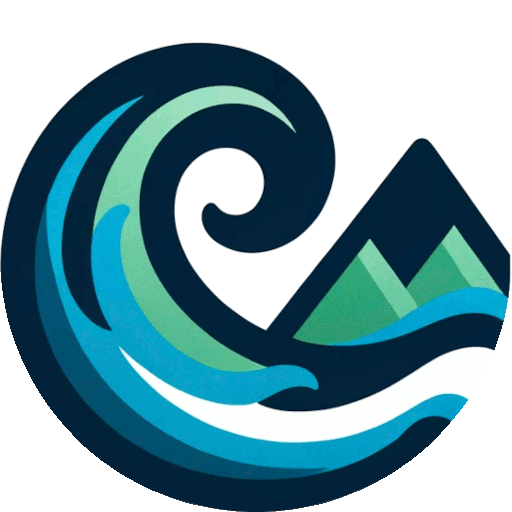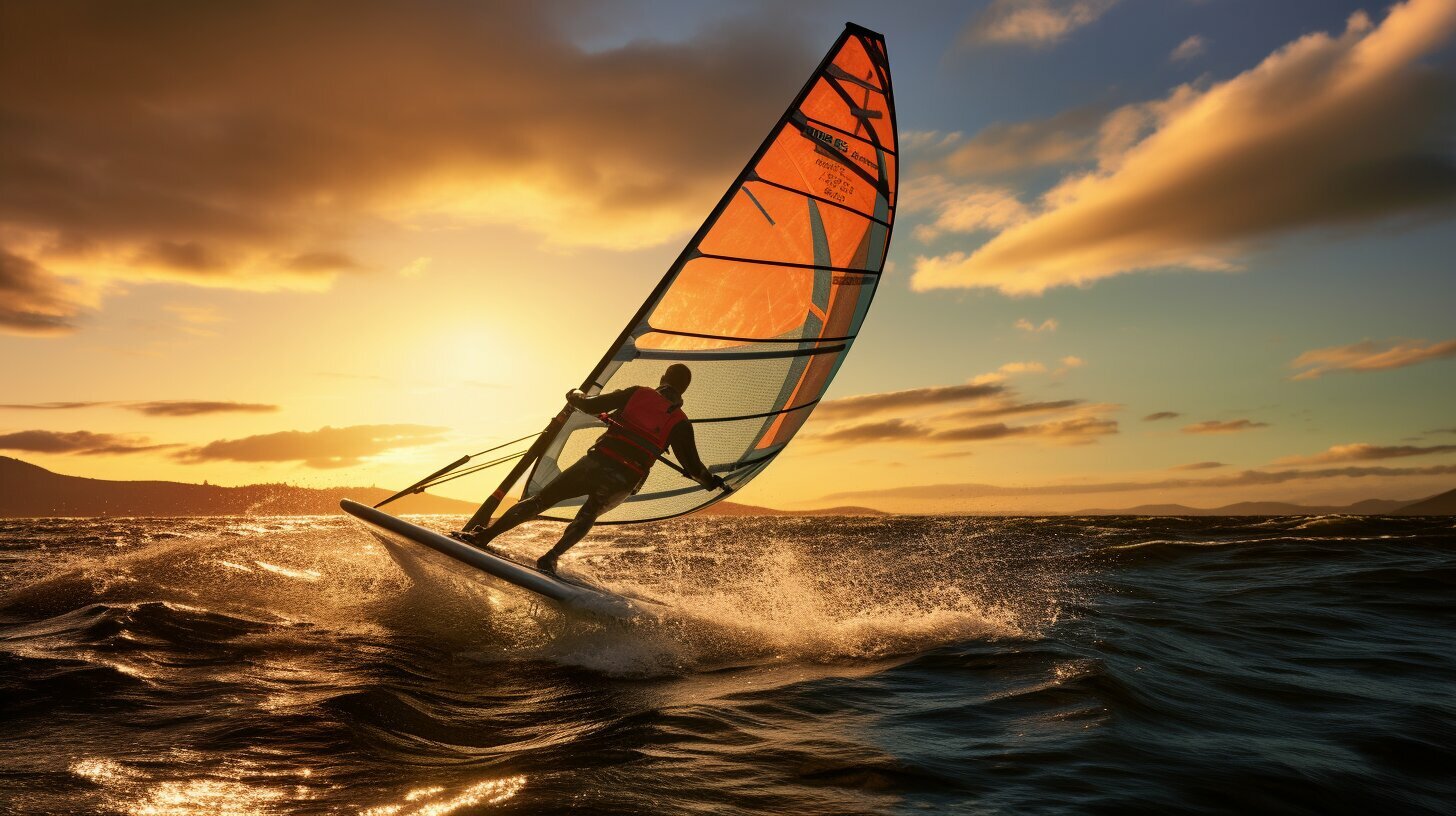Are you ready to take on the challenge of paddleboard racing? Whether you’re a seasoned paddler or a newbie, stand up paddleboard racing (SUP racing) is an exhilarating sport that requires skill, strength, and endurance. In this guide, we’ll provide you with all the tools you need to succeed in paddleboard racing, including essential gear, training tips, and race strategies. Let’s dive in!
Before we delve into the specifics, let’s define paddleboard racing. It involves racing on paddleboards in both flatwater and ocean environments. With various competition formats, including distance races, sprints, and technical courses, paddleboard racing is a dynamic sport that tests a paddler’s full range of skills.
Our aim in this guide is to help you develop the knowledge and expertise to excel in paddleboard racing. From essential gear to advanced techniques, we’ve got you covered. Let’s get started!
Key Takeaways
- Paddleboard racing involves racing on paddleboards in both flatwater and ocean environments.
- With various competition formats, including distance races, sprints, and technical courses, paddleboard racing is a dynamic sport that tests a paddler’s full range of skills.
- This guide provides the tools you need to succeed in paddleboard racing, including essential gear, training tips, and race strategies.
Understanding Paddleboard Racing
If you’re interested in stand up paddleboarding competitions, then the world of paddleboard racing may be just what you’re looking for. Paddleboard racing involves racing against other paddlers on various water bodies, including lakes, rivers, and oceans. There are different types of paddleboarding competitions and race events, including distance races, sprint races, and technical races.
Distance races are the most common type of paddleboard race. As the name suggests, these races involve covering a certain distance, usually between 5 and 20 miles, as quickly as possible. In sprint races, participants race over shorter distances, usually between 200 and 500 meters, in a straight line. Technical races are more complex and involve paddling through a course that involves obstacles, turns, and other challenges.
Disclosure: When you buy through links on our site, we may earn an affiliate commission.
Paddleboard race events take place all over the world and are often divided into amateur and professional events, with varying levels of difficulty. Some of the most popular events include the Carolina Cup, the Pacific Paddle Games, and the Molokai 2 Oahu Paddleboard World Championships.
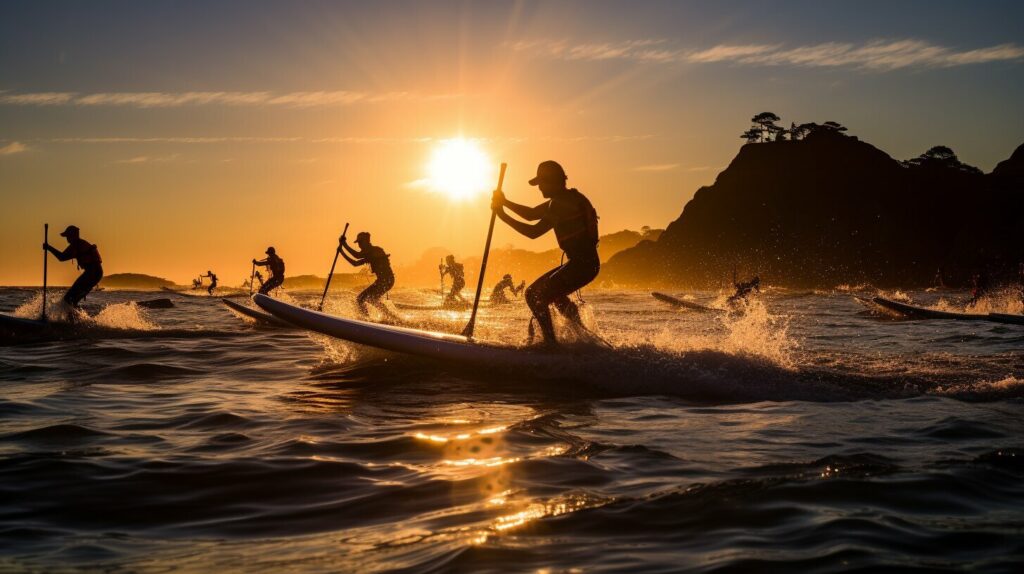
The Essential Gear for Paddleboard Racing
Before diving into paddleboard race training, it is essential to have the right gear. With the proper equipment, you can maximize your performance, minimize risks, and enjoy your racing experience to the fullest. Here are the essential pieces of gear for paddleboard racing:
The Stand Up Paddleboard (SUP)
The most significant piece of gear for paddleboard racing is, of course, the paddleboard itself. The ideal SUP for racing should be long, narrow, and lightweight, allowing for efficient and fast paddling. The length of the board should be between 12 and 14 feet, while the width should be between 22 and 28 inches. A race board will typically be narrower than a recreational board, which will help with speed. Consider the material of the board, including foam, fiberglass, or carbon fiber, as this will affect the board’s weight and stiffness.
The Paddle
The paddle is the second most critical piece of gear for paddleboard racing. The paddle should be lightweight, durable, and comfortable to hold. Consider the shaft’s material, shape, and diameter as this will affect the paddle’s weight and stiffness. When selecting a paddle, consider your height and paddling style. The blade of the paddle should be angled to create the most efficient forward motion with minimal fatigue.
Safety Equipment
Safety should always be a top priority when racing on the water. Essential safety equipment includes a personal floatation device (PFD), a whistle, and a leash. A properly fitting PFD will keep you afloat in case of an accident, while a whistle alerts others to your location. The leash attaches the board to your ankle, preventing it from drifting away in case of a fall.
Clothing
What you wear when racing can affect your performance and comfort. It is best to wear moisture-wicking clothing that provides sun protection and won’t weigh you down when wet. For colder water, consider wearing a wetsuit or a drysuit to stay warm.
Paddleboard Race Training
To master paddleboard racing, you must train hard and train smart. Consistent training will help you build strength, endurance, and technical skills essential for successful racing. Consider registering for a training program or hiring a coach to help you optimize your workouts and improve your technique.
With the right gear and proper training, you can conquer the waves and become a paddleboard racing champion.
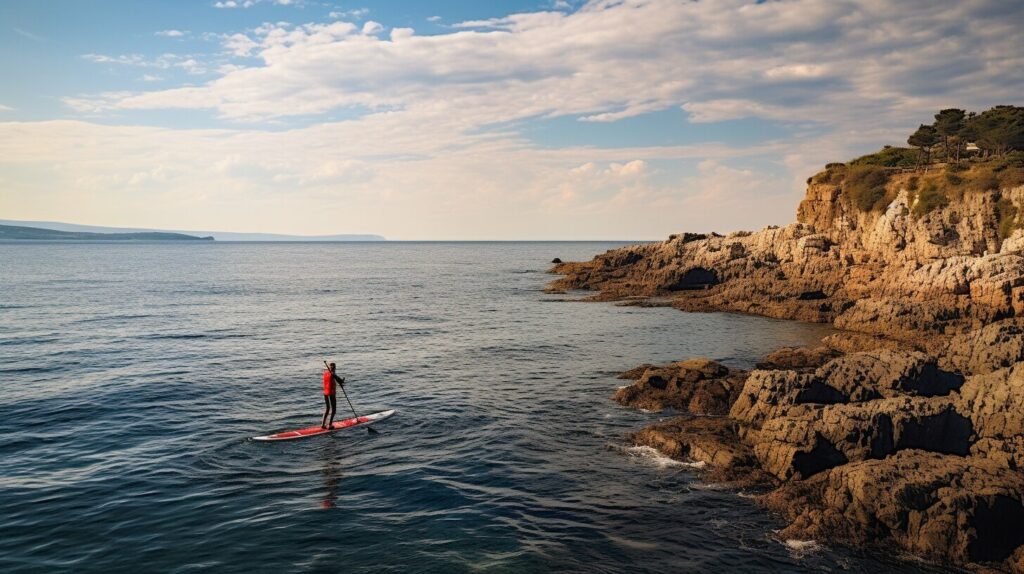
Choosing the Right Paddleboard for Racing
In paddleboard racing, choosing the right board can make all the difference in your performance. When selecting a paddleboard for racing, consider several factors that will impact the speed, stability, and maneuverability of your board.
Length
The length of your board affects its speed, with longer boards offering more speed and shorter boards providing increased maneuverability. For paddleboard racing, a board between 12’6” to 14’ in length is recommended for optimal speed and efficiency.
Width
The width of your board impacts its stability, with wider boards providing more stability and narrower boards providing less. It’s suggested to choose a board that is 25-30 inches wide for optimal stability in paddleboard racing conditions.
Shape
The shape of your board can affect its speed, stability, and maneuverability. A board with a pointed nose and narrow tail will provide speed and agility, while a board with a wider nose and rounded tail will provide better stability in choppy waters. The rocker, which is the curve of the board from nose to tail, affects how easily the board turns and paddles through waves.
Construction Materials
There are three primary types of construction materials for paddleboards: foam, fiberglass, and carbon fiber. Foam boards are the most affordable but also the least durable. Fiberglass boards are more durable, providing a balance between weight and strength, while carbon fiber boards are the most expensive but offer the highest levels of strength and stiffness, making them ideal for racing.
Paddle Selection
When choosing a paddle for paddleboard racing, consider the size, shape, and weight of the paddle. A paddle’s length should be 6-12 inches taller than you, and the blade size should fit your paddling ability and the type of water conditions. It’s recommended to choose a paddle with a lightweight construction and a flexible shaft for improved speed and reduced fatigue during long races.
Safety Equipment and Recommended Clothing
While paddleboard racing, it’s always important to prioritize safety. Consider wearing a personal flotation device, a leash, and a helmet. Additionally, choose clothing that is comfortable, lightweight, and allows for a full range of motion. A rash guard or wetsuit is helpful in colder conditions or to prevent sunburn.
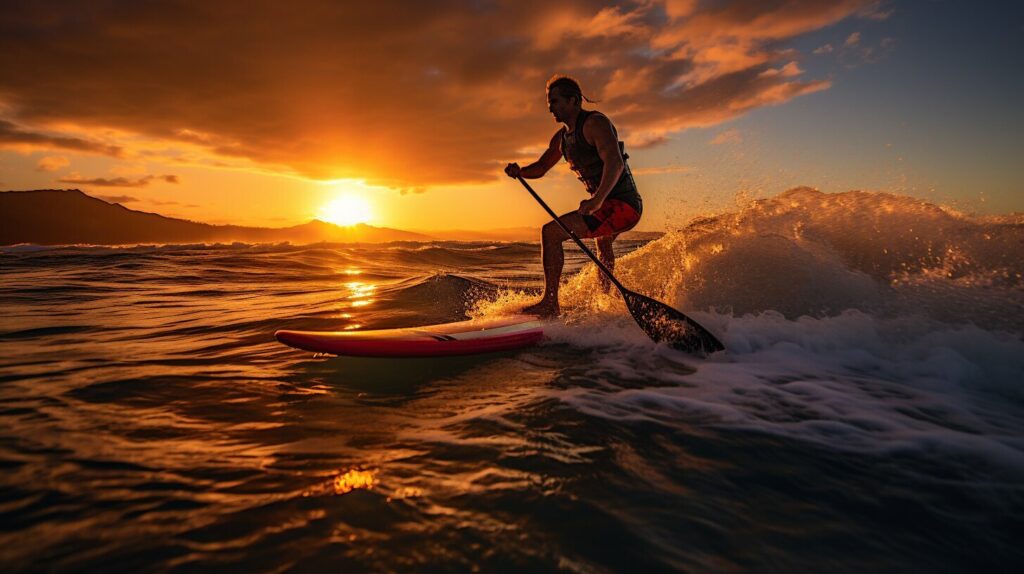
Preparing Yourself for Paddleboard Racing
If you’re serious about paddleboard racing, it’s essential to prepare your body for the physical demands of the sport. A combination of physical conditioning, strength training, and endurance exercises can help you perform better on race day.
You should consider a regular workout routine that focuses on improving your upper body strength, especially your core muscles, arms, and shoulders. Engaging in high-intensity interval training (HIIT) can also help increase your overall fitness levels and improve your endurance.
Another crucial aspect of preparing for paddleboard racing is practicing on race courses. This will help you get familiar with the course’s challenges and adjust your stroke techniques, balance, and maneuvers accordingly. Participating in paddleboard race training programs can also provide you with valuable insights and help you develop an effective workout routine.
To make the most of your training, you should also pay attention to your nutrition and hydration. Maintaining a healthy and balanced diet can help fuel your body before, during, and after races. Make sure to hydrate regularly, especially on hot and sunny days, to prevent dehydration and fatigue.

Remember that preparing for paddleboard racing is not just about physical conditioning. Mental preparation is also crucial to your success. Developing mental strength, focus, and visualization techniques can help you stay calm and focused during races. Managing race-day nerves is also essential, and you should practice relaxation techniques such as deep breathing and visualization before and during races.
Overall, preparing for paddleboard racing requires a combination of physical and mental conditioning, practice, and proper nutrition and hydration. Follow these tips to prepare yourself effectively, and you’ll be on your way to paddleboard racing success.
Mastering Paddleboard Racing Techniques
As with any sport, mastering the right techniques is crucial for success in paddleboard racing. Here are some steps to help you improve your skills:
1. Proper Paddling Form
The correct paddling form involves keeping your arms straight, engaging your core, and using your entire body to generate power. Your top hand should be holding the paddle while the other hand is placed on the shaft. Rotate your torso as you dip the paddle into the water and pull back to propel your board forward. Aim to keep the paddle as vertical as possible for optimal efficiency, and avoid paddling too close to the board.
2. Balance and Stability
Paddleboarding requires excellent balance and stability. To maintain your balance, stand upright with your feet parallel and shoulder-width apart on the board. Keep your knees slightly bent and your core engaged. Practice standing on one foot or attempting yoga poses to improve your balance and stability.
3. Maneuvering and Turning
To maneuver the paddleboard, you need to be able to turn it quickly and efficiently. A basic turn involves placing your paddle in the water and pulling it towards the tail of the board on the side you want to turn. The board will naturally pivot in the opposite direction. For a sharper turn, sweep your paddle towards the nose of the board. Practice these techniques in calm waters before attempting them in more challenging conditions.
4. Effective Bracing
Bracing is used to maintain stability in rough conditions. To brace, place the paddle in the water on the opposite side of your board to where the wave is coming from. Lean your weight onto the paddle and keep your knees bent to absorb any impact. Use your paddle as a lever to counter the force of the wave.
5. Proper Drafting
Drafting involves positioning yourself behind another paddler to reduce wind resistance, conserve energy, and gain speed. Stay about a board length behind and slightly to the side of the paddler in front of you. Focus on maintaining your speed while minimizing your effort, and be aware of other paddlers around you.
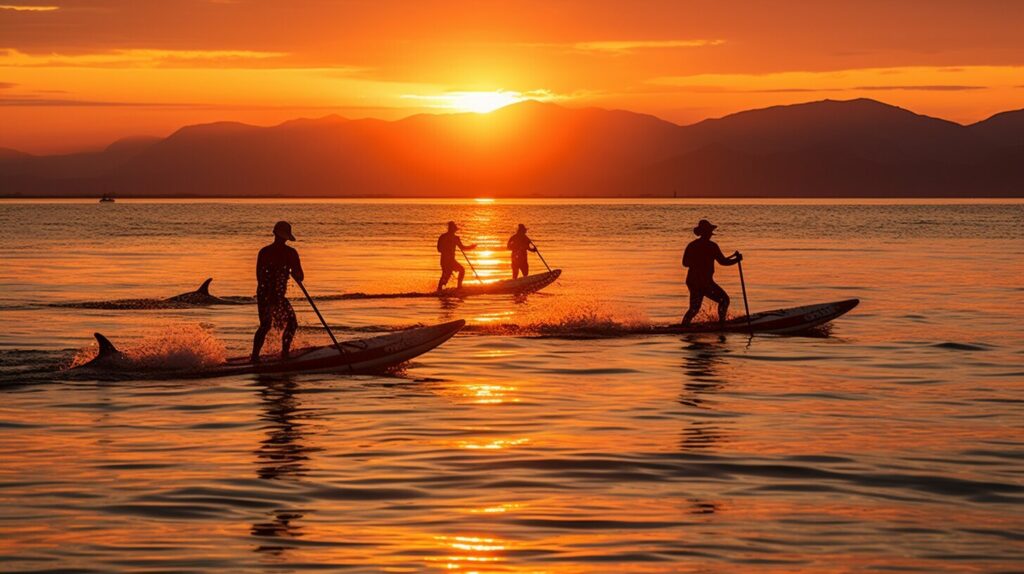
6. Improving Your Timing
Timing is key to achieving maximum efficiency in paddleboard racing. Aim to paddle when the water is still and avoid paddling during high tide or when waves are breaking. Try to maintain a steady pace and avoid over-exerting yourself at the beginning of the race to conserve your energy for the rest of the course.
By following these paddleboard racing techniques, you can become a more skilled and efficient paddler. Remember to practice regularly in different conditions to improve your overall performance.
Developing Strategy and Race Tactics
Once you’ve mastered the essential techniques of paddleboard racing, it’s time to focus on developing a winning strategy. A successful race strategy involves analyzing the course, positioning yourself for optimal performance, drafting effectively, and conserving energy throughout the race.
From the moment you register for a race, take the time to study the course map and familiarize yourself with any obstacles and challenges you may encounter. This will help you plan your race tactics and choose the best equipment for the conditions.
Course Analysis
When analyzing the course, consider factors such as the length of the race, the direction and strength of the wind and currents, and any potential hazards such as rocks, buoys, or other competitors. This will help you determine which parts of the course to attack and which parts to conserve energy.
Positioning and Drafting
Your positioning on the starting line can have a significant impact on your performance. Try to position yourself in a spot that allows you to start the race with minimal interference from other competitors. During the race, use other competitors to your advantage by drafting behind them to conserve energy.
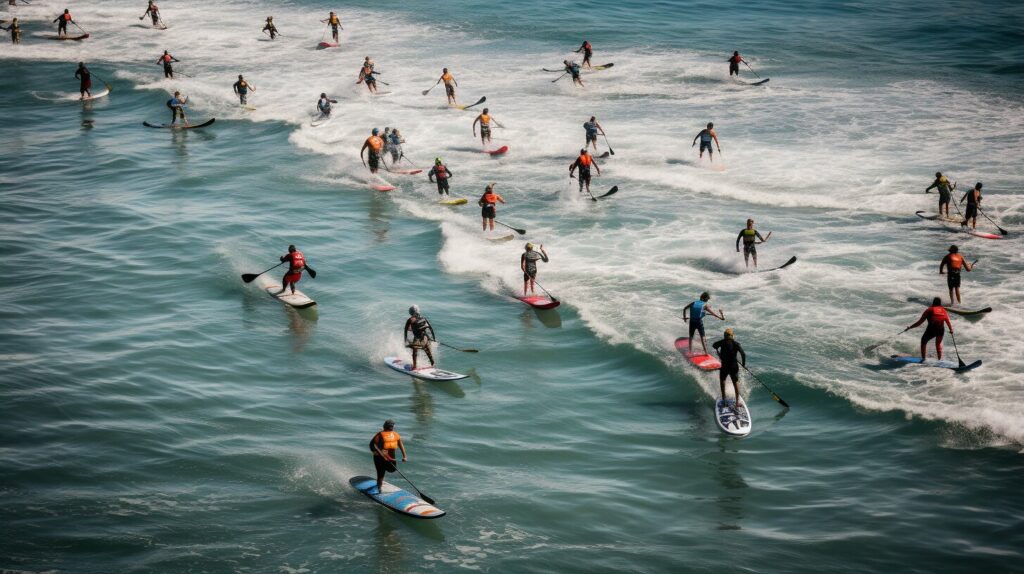
Energy Conservation
Effective energy conservation starts with proper pacing and stroke technique. Avoid overexerting yourself early in the race, and maintain a consistent pace throughout. Focus on maintaining proper paddling form and minimizing unnecessary movements that can waste energy.
By developing a solid strategy and race tactics, you can maximize your performance and increase your chances of success in paddleboard racing.
Nutrition and Hydration Tips for Paddleboard Racing
Proper nutrition and hydration are essential elements of your paddleboard race training. They can provide the energy and sustenance you need to complete a race successfully and achieve your desired results. Here are some nutrition and hydration tips to keep in mind:
Before the Race
Make sure your body is properly fueled and hydrated before starting the race. Eating a balanced meal a few hours before the race can help ensure you have the necessary energy to compete. Consider eating foods that are high in carbohydrates and protein, such as oatmeal with nuts and fruit or a turkey sandwich on wheat bread. Also, drink plenty of water to keep yourself adequately hydrated and avoid caffeine and alcohol, which can dehydrate you.
During the Race
Staying hydrated and fueled during the race is critical for optimal performance. Bring enough water to keep you hydrated throughout the course, and consider consuming carbohydrate-rich snacks like energy bars, bananas, or sports drinks to maintain your energy. However, be careful not to eat too much or too quickly, as this can cause stomach discomfort, bloating, or cramps.
After the Race
Replenishing your body after the race is important for recovery and reducing muscle soreness. Within 30 minutes of completing the race, eat a snack or meal rich in protein and carbohydrates like grilled chicken with sweet potatoes or a quinoa and vegetable salad. You may also want to consider a recovery drink or protein shake. And, don’t forget to continue hydrating by drinking water throughout the day.

By following these nutrition and hydration tips, you can provide your body with the necessary fuel and hydration to tackle paddleboard racing like a pro. Remember to experiment with different foods and fluids during your training sessions to determine what works best for you and always listen to your body’s signals when it comes to hunger, thirst, and fatigue.
Mental Preparation for Paddleboard Racing
Paddleboard racing requires more than just physical preparation. Mental strength and focus are also crucial for a successful race. In fact, mental preparation can give you the edge you need to win.
One of the most effective mental preparation techniques is visualization. Visualization involves picturing yourself successfully completing the race and reaching your goals.
Another important aspect of mental preparation is managing race-day nerves. It’s normal to feel nervous before a race, but too much anxiety can negatively impact your performance. To combat this, try deep breathing exercises or meditation to calm your nerves.
Additionally, maintaining a positive mindset can improve your mental state and ultimately, your performance. Focus on your strengths and past successes, and use these to boost your confidence.
Lastly, it’s important to be adaptable and accept any unexpected challenges that may arise during the race. Keeping a clear and flexible mindset can help you tackle obstacles with ease.
Incorporating these mental preparation techniques into your paddleboard race training can greatly improve your chances of success.
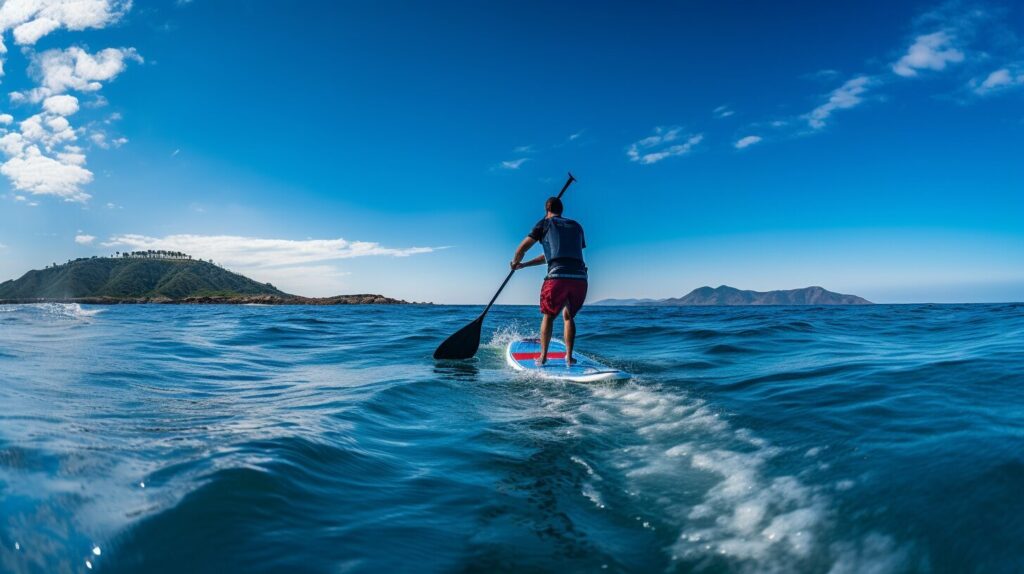
Participating in Professional Paddleboard Racing
If you’re looking to take your paddleboard racing to the next level, participating in professional competitions could be a great option. Professional paddleboard racing, also known as competitive paddleboarding, offers a range of exciting challenges and career opportunities.
Professional paddleboard racing events are typically larger and more intense than amateur competitions, attracting top athletes from around the world. These races may offer significant cash prizes, sponsorship opportunities, and media exposure.
Types of Professional Paddleboard Racing
There are several types of professional paddleboard racing events, including:
- World Championships
- Regional events
- Sprint races
- Endurance races
- Technical races
World Championships are the most prestigious events in professional paddleboard racing, featuring the world’s top athletes competing for the title of world champion. Regional events may be smaller but still offer the chance to compete against skilled competitors from your area.
Sprint races are short-distance, high-intensity events that test your speed and power, while endurance races can span several miles and require exceptional stamina. Technical races involve navigating through obstacles or challenging surf conditions, requiring superior board control and maneuvering skills.
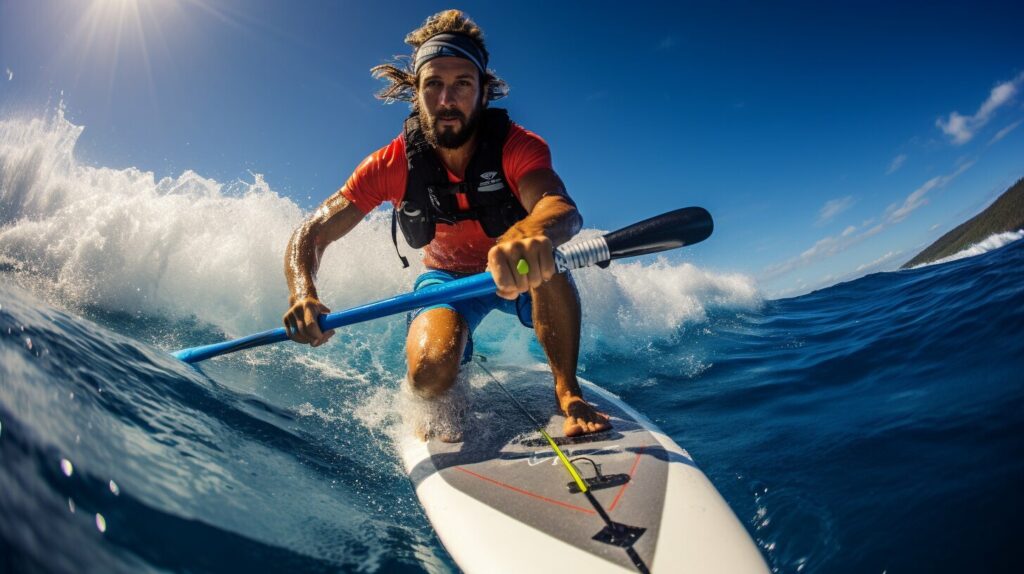
Competitive paddleboarding also offers the chance to join a professional team or get sponsored by a business or brand. Sponsors can provide financial support, equipment, and other resources to help you excel in your racing career.
Ranking Systems
Professional paddleboard racing follows a ranking system that determines the standings of athletes based on their performance in various competitions. Rankings provide a means for paddlers to track their progress and compete against others at their skill level.
The World Paddle Association (WPA) is one of the major organizations responsible for ranking professional paddleboard racers. The WPA’s ranking system is based on a point system that takes into account the number and level of competitions an athlete participates in, as well as their performance in each event.
Career Development
Professional paddleboard racing can offer a fulfilling and rewarding career path for those with the skills, dedication, and passion for the sport. Becoming a professional paddleboard racer requires extensive training, consistent practice, and a willingness to compete at the highest level.
Professional paddleboard racers can earn a living through competition winnings, sponsorships, and endorsements. They may also have the opportunity to teach lessons, coach others, or work in the paddleboarding industry.
Whether you’re just starting out or looking to take your racing to the next level, professional paddleboard racing offers exciting challenges, opportunities for growth, and the chance to be part of a vibrant and supportive community.
Training Programs and Resources for Paddleboard Racing
If you are interested in improving your paddleboard racing skills, there are several training programs and resources available to help you achieve your goals.
One option is to hire a personal coach or join a training program that specializes in paddleboard race training. These programs offer personalized instruction and can help you develop a training plan tailored to your specific needs and goals.
Another option is to take advantage of the wealth of online resources available for paddleboard race training. Websites such as paddling.com and supracer.com offer a variety of articles, videos, and training plans to help you improve your skills.
Additionally, there are several books and DVDs available on the subject of paddleboard racing. These resources can provide valuable insights, techniques, and strategies to take your racing to the next level.
Finally, consider joining a local paddleboard racing club or community. Not only will you have access to a network of experienced racers who can offer tips and advice, but you will also have the opportunity to participate in practice sessions and local races.
No matter which resources you choose, the key is to stay committed to your training and practice regularly. With hard work and dedication, you can achieve great success in paddleboard racing.
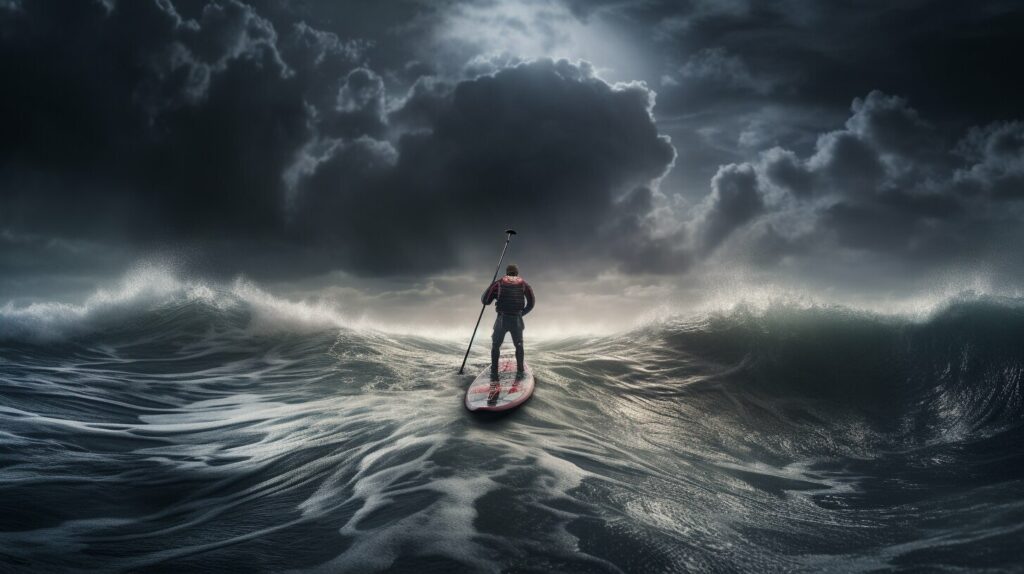
Conclusion
You have now gained valuable insights into the world of paddleboard racing. By following the tips and techniques shared in this guide, you can improve your racing skills, achieve better results, and enjoy the thrill of competitive paddleboarding.
Remember, success in paddleboard racing requires dedication, discipline, and perseverance. Keep pushing yourself to become a better paddler, both physically and mentally. With consistent training and practice, your hard work will pay off, and you will see a significant improvement in your paddleboard race results.
So, what are you waiting for? Get out there, hit the water, and conquer the waves with your paddleboard racing skills!
FAQ
Q: What is paddleboard racing?
A: Paddleboard racing is a competitive sport where individuals race against each other on stand-up paddleboards (SUP) in various types of races and events.
Q: What gear do I need for paddleboard racing?
A: The essential gear for paddleboard racing includes a paddleboard, paddle, safety equipment (life jacket, leash), and appropriate clothing.
Q: How do I choose the right paddleboard for racing?
A: When selecting a paddleboard for racing, consider factors such as length, width, shape, and construction materials to ensure optimal performance.
Q: How should I prepare myself for paddleboard racing?
A: Preparing for paddleboard racing involves physical conditioning, strength training, endurance exercises, and practicing on race courses.
Q: What are some essential paddleboard racing techniques?
A: Mastering paddleboard racing techniques involves learning proper paddling form, maintaining balance, maneuvering, and executing effective turns.
Q: How can I develop strategy and race tactics for paddleboard racing?
A: Developing strategy and race tactics in paddleboard racing includes analyzing the course, positioning, drafting, and conserving energy.
Q: What should I know about nutrition and hydration for paddleboard racing?
A: Proper nutrition and hydration before, during, and after paddleboard races are crucial for optimal performance and recovery.
Q: How can I mentally prepare for paddleboard racing?
A: Mental preparation for paddleboard racing involves building mental strength, maintaining focus, utilizing visualization techniques, and managing race-day nerves.
Q: What are the opportunities in professional paddleboard racing?
A: Professional paddleboard racing offers sponsorship opportunities, competitive competitions, ranking systems, and potential career development.
Q: What training programs and resources are available for paddleboard racing?
A: There are various training programs, online resources, and coaching options available to individuals looking to improve their paddleboard racing skills.
